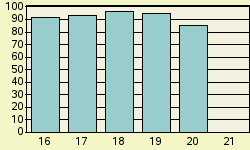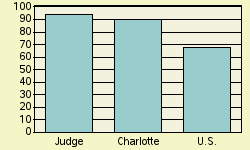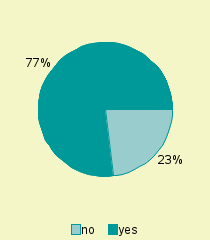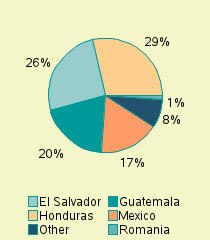Judge V. Stuart Couch
FY 2016 - 2021, Charlotte Immigration Court
Attorney General Eric Holder appointed Judge Couch in October 2010. Judge Couch received a bachelor of arts degree in 1987 from Duke University, a juris doctorate in 1996 from Campbell University, Buies Creek, N.C., and a master of law degree in 2008 from George Washington University Law School. From 2009 to October 2010, he was in private practice in Charlotte, N.C. He served in a succession of assignments for 22 years of active Marine Corps service, including senior appellate judge on the U.S. Navy-Marine Corps Court of Criminal Appeals in Washington, D.C., from 2006 to 2009. He served as a senior prosecutor, Department of Defense, Office of Military Commissions, Washington, D.C., from 2003 to 2006, military justice officer and chief trial counsel, Camp Lejeune, N.C., from 2001 to 2003, and chief trial counsel, Marine Corps Air Station, Cherry Point, N.C., from 1996 to 1999. He was a legal officer and KC-130 pilot, Marine Aerial Refueler Transport Squadron 252, Marine Corps Air Station, Cherry Point, from 1989 to 1993. From 1999 to 2000, Judge Couch was in private practice in New Bern, N.C. From 2000 to 2001, he served as an assistant district attorney, Beaufort, N.C. Judge Couch is a member of the North Carolina State Bar.
Deciding Asylum Cases
Detailed data on Judge Couch decisions were examined for the period covering fiscal years 2016 through 2021. During this period, Judge Couch is recorded as deciding 659 asylum claims on their merits. Of these, he granted 39, gave no conditional grants, and denied 620. Converted to percentage terms, Couch denied 94.1 percent and granted (including conditional grants) 5.9 percent. Figure 1 provides a comparison of Judge Couch's denial rate fiscal year-by-year over this recent period. (Rates for years with less than 25 decisions are not shown.)
Nationwide Comparisons
Compared to Judge Couch's denial rate of 94.1 percent, nationally during this same period, immigration court judges denied 67.6 percent of asylum claims. In the Charlotte Immigration Court where Judge Couch was based, judges there denied asylum 90.2 percent of the time. See Figure 2.
Judge Couch can also be ranked compared to each of the 558 individual immigration judges serving during this period who rendered at least one hundred decisions in a city's immigration court. If judges were ranked from 1 to 558 - where 1 represented the highest denial percent and 558 represented the lowest - Judge Couch here receives a rank of 72. That is 71 judges denied asylum at higher rates, and 486 denied asylum at the same rate or less often. Ranks are tallied separately for each immigration court. Should a judge serve on more than one court during this period, separate ranks would be assigned in any court that the judge rendered at least 100 asylum decisions in.
Why Do Denial Rates Vary Among Judges?
Denial rates reflect in part the differing composition of cases assigned to different immigration judges. For example, being represented in court and the nationality of the asylum seeker appear to often impact decision outcome. Decisions also appear to reflect in part the personal perspective that the judge brings to the bench.
Representation
If an asylum seeker is not represented by an attorney, almost all (88%) of them are denied asylum. In contrast, a significantly higher proportion of represented asylum seekers are successful. In the case of Judge Couch, 23.1% were not represented by an attorney. See Figure 3. For the nation as a whole, about 18.3% of asylum seekers are not represented.
Nationality
Asylum seekers are a diverse group. Over one hundred different nationalities had at least one hundred individuals claiming asylum decided during this period. As might be expected, immigration courts located in different parts of the country tend to have proportionately larger shares from some countries than from others. And, given the required legal grounds for a successful asylum claim, asylum seekers from some nations tend to be more successful than others.
For Judge Couch, the largest group of asylum seekers appearing before him came from Honduras. Individuals from this nation made up 28.5 % of his caseload. Other nationalities in descending order of frequency appearing before Judge Couch were: El Salvador (25.6 %), Guatemala (19.7%), Mexico (16.8%), Romania (1.1%). See Figure 4.
In the nation as a whole during this same period, major nationalities of asylum seekers, in descending order of frequency, were El Salvador (18.7%), Guatemala (16.0%), Honduras (15.0%), Mexico (11.8%), China (8.4%), India (3.8%), Cuba (2.7%), Haiti (1.8%), Venezuela (1.6%), Cameroon (1.5%), Nicaragua (1.2%), Nepal (1.2%), Ecuador (1.1%).




